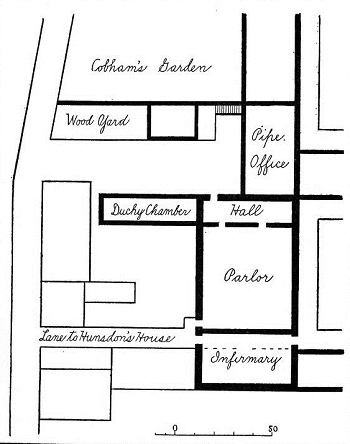| directory |
| home | contact |
|
|||||||||||||||
| search | |||||||||||||||
Blackfriars TheatreShakespeare Hits the Big TimeBlackfriars Theatre was built by Richard Burbage in 1596 on the northern bank of the Thames. Unlike the public theatres, private theatres such as the Blackfriars had roofs and specifically catered to the wealthy and highly educated classes of London society. In addition, while there were strict regulations on public playhouses within the circuit of the old city wall, the private theatres in London were built upon grounds that belonged to the church -- grounds that had been appropriated by Henry VIII and were therefore not under the control of the Lord Mayor. The Blackfriars soon became the premier playhouse in all of London. The price for admission was up to five times that of the Globe, and it seated about seven hundred people in a paved auditorium. It was equipped with artificial lighting and other amenities that the other playhouses did not possess, but overall it quite closely resembled the public theatres with its trap doors, superstructure of huts (with wires and belts to hang props and lower actors), inner stage, and tiring house.
...for more than half of his career in London Shakespeare shared in the enterprise of the Lord Chamberlain-King's company as actor, patented member, dramatist, and housekeeper, first of the Globe and then of both the Globe and the Blackfriars. No other man of the time is known to have been tied to the theatre in so many different ways (110).How to cite this article: Mabillard, Amanda. Blackfriars Theatre: Shakespeare's Winter Home. Shakespeare Online. 20 Aug. 2000. (date when you accessed the information) < http://www.shakespeare-online.com/theatre/blackfriars.html >. Further Reading Bentley, Gerald Eades. Shakespeare: A Biographical Handbook. New Haven: Yale UP, 1968. Berry, Herbert, ed. The First Public Playhouse. Montreal: Queen's University Press, 1979. Boyce, Charles. Shakespeare A to Z. New York: Facts on File, 1990. Rutter, Carol Chillington. Documents of the Rose Playhouse. Manchester: Manchester UP, 1984. ____ Related Resources |

|
©1999-2021 Shakespeare Online. All Rights Reserved.